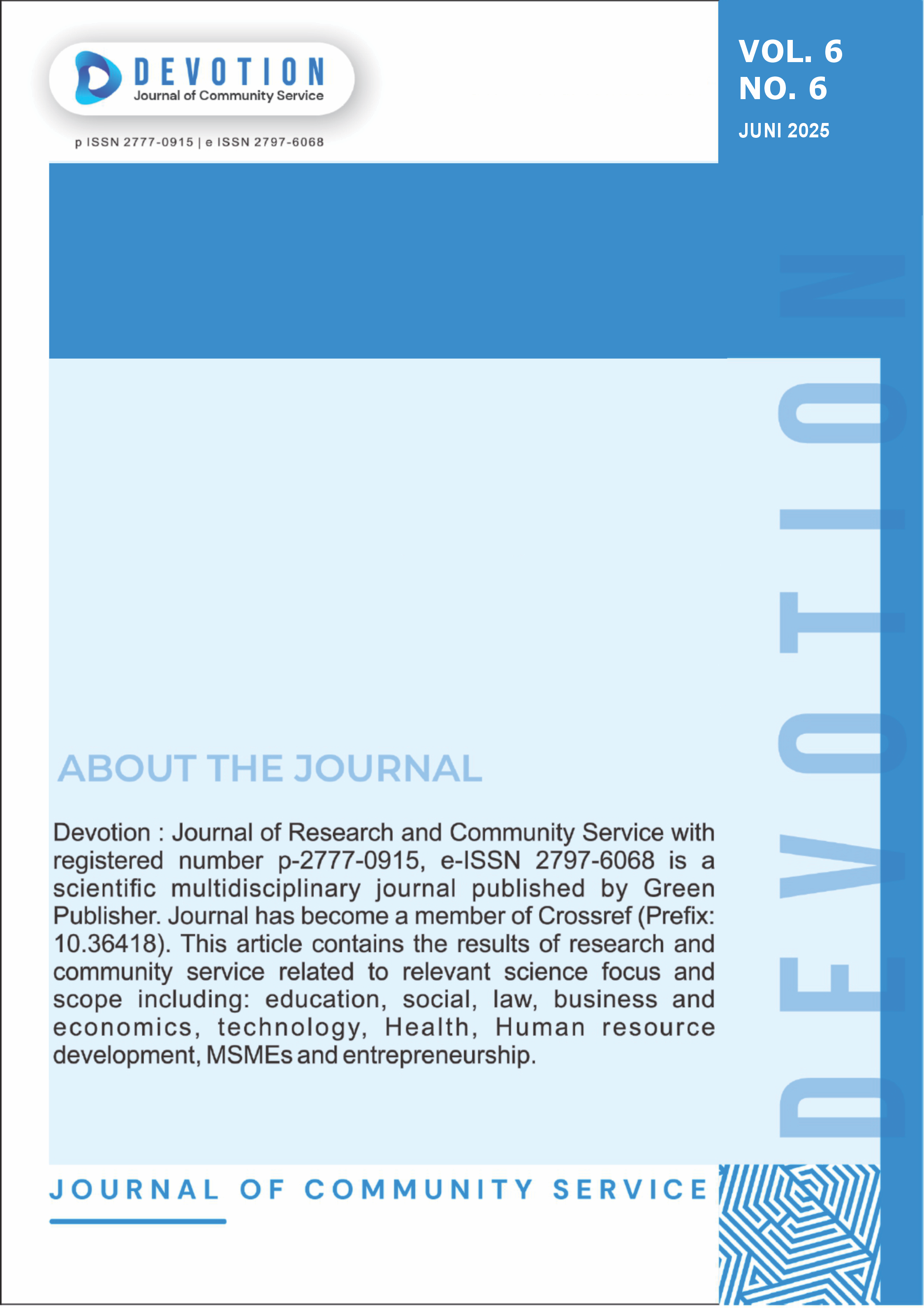Digital Transformation of Notary Deed Minutes Towards Electronic Format with the Utilization of Blockchain Technology for Efficiency and Security of Data Storage
DOI:
https://doi.org/10.59188/devotion.v6i6.25474Keywords:
Notarial Deed Minutes, Digitization, Electronic StorageAbstract
The development of digital technology has encouraged various sectors to transform, including in the field of notary. One significant change is the transition of notarial deed minutes from physical paper to electronic form. This transformation not only provides efficiency in terms of storage space but also opens up opportunities to improve data security and reliability through the use of blockchain technology. Blockchain, with its decentralized and transparent nature, protects against forgery, loss, or manipulation of data. With the digitization and integration of blockchain-based storage systems, archiving notarial deeds can be more efficient, faster, and safer, and in line with the needs of modernizing legal and administrative systems in the digital era.
Downloads
Published
Issue
Section
License
Copyright (c) 2025 Mustopa Mustopa, KMS Herman

This work is licensed under a Creative Commons Attribution-ShareAlike 4.0 International License.
Authors who publish with this journal agree to the following terms:
- Authors retain copyright and grant the journal right of first publication with the work simultaneously licensed under a Creative Commons Attribution-ShareAlike 4.0 International. that allows others to share the work with an acknowledgement of the work's authorship and initial publication in this journal.
- Authors are able to enter into separate, additional contractual arrangements for the non-exclusive distribution of the journal's published version of the work (e.g., post it to an institutional repository or publish it in a book), with an acknowledgement of its initial publication in this journal.
- Authors are permitted and encouraged to post their work online (e.g., in institutional repositories or on their website) prior to and during the submission process, as it can lead to productive exchanges, as well as earlier and greater citation of published work.













